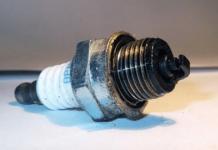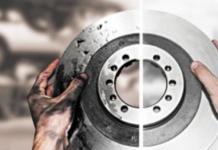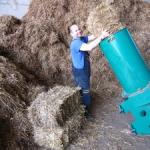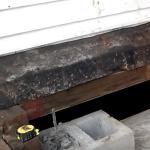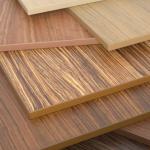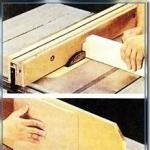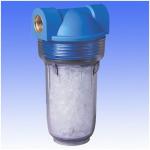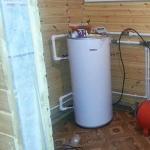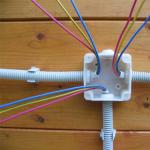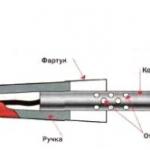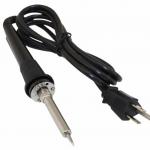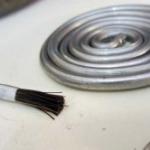Modern chainsaws delight us with their reliability, ease of operation and the presence of many special vibration suppression systems, automatic chain lubrication, and easy starting. But even such equipment fails over time, especially if it is not properly and timely serviced. We offer to study the characteristic breakdowns of chainsaws and methods for eliminating them with your own hands.
Signs of breakdown and self-repair of the chainsaw motor
One of the most common breakdowns of each chainsaw is a malfunction of its motor. Determining that the reason lies precisely in this is quite simple. Several symptoms may indicate this problem:
- The chainsaw does not start;
- The motor of the tool is unstable and very noisy;
- The engine can be started, but it constantly stalls;
- The motor overheats very quickly;
- The chainsaw only works on suction;
- The motor smokes a lot, and the power, at the same time, drops.
If you do not know how to make the chainsaw work quietly, then, first of all, you will need to study its design. Only after that you can start self-repair tool.
To understand why the chainsaw is heating up or running louder than before, you will need to study the essence and cause of the breakdown. It is quite possible that there is no malfunction, in fact. For example, if when you start a chainsaw, its motor does not start, and you do not hear any strange sounds, then it is quite possible that you keep it on suction for too long - this is one of the main reasons why the tool candle is flooded.
To avoid such mistakes, you should once again study the procedure for starting a chainsaw with a cold engine. The algorithm of actions is as follows:
- Lower the throttle switch to the "Closed" position;
- Press the primer several times to pump fuel into the carburetor;
- Pull the starter handle until resistance appears;
- After the saw starts and immediately stalls, move the damper lever to the “Open” position;
- Start the chainsaw again and let it idle for a while.
If this does not help, then you will need to inspect the spark plug. If you see a large amount of oil on it, then the part must be unscrewed and dried. After that, you need to dry the combustion chamber, screw in the candle and try to start the saw again.
The serviceability of the candle itself can be checked as follows. First you need to connect a high-voltage wire to it, put the spare part on the cylinder and pull out the starter cable. In this case, in no case do not grab the candle with your hands. If you notice a blue spark, then the candle is fully functional. Screw the part back into place in the chainsaw and restart the engine. If this did not help, then it was the turn to check the ignition system and the wires connected to the candle.
If large spots of fuel are visible on the candle, then you will need to check the tool carburetor. If a thick layer of black soot has formed on the part, then the problem may lie in the use of low-quality engine oil - quite often this is the reason why the chainsaw spark plug is flooded. The agent must be replaced, and the candle thoroughly cleaned with a needle or awl.

When checking the candle, be sure to pay attention to the distance between the electrodes - it should be from 0.5 to 0.65 mm. Very often, too much distance between the electrodes is the reason why there is no spark.
In most service centers, chainsaw adjustment is performed using special equipment. Each model has its own optimal screw rotation angles. As a rule, chainsaws do not require frequent adjustment of carburetors. However, they may be required in certain cases:
- With severe wear of the motor pistons - this is precisely the reason why the chainsaw shoots;
- If a blockage forms inside the carburetor as a result of the use of low-quality gasoline and the failure of the air filter - in such cases, not only adjustment, but also flushing of the unit will be required;
- If the protective cover is damaged, this is often the reason why the chainsaw revs itself.
There are a number of signs that directly indicate the need to adjust the carburetor:
- The engine does not idle at idle or the chainsaw does not start at all - the reason lies in a bad fuel mixture;
- Fuel consumption and exhaust gas volume increased sharply - this is a consequence of the carburetor's oversaturation with the fuel mixture.
The carburetor setting scheme may differ for different chainsaw models. But despite this, the general principle remains unchanged.
To adjust the carburetor, you need to use 3 screws. They are marked like this:
- L - Stands for "Low", and is used to adjust low speeds;
- H - Has a value of "High", and is responsible for working at high speeds;
- T (S, LA) - used to adjust the idle speed.
Before adjusting the chainsaw, you should make sure that the cutting chain of the tool is directed in the opposite direction from you. The chainsaw must be placed on a level surface so that its chain does not touch other objects.
Before adjusting the chainsaw, carefully study the procedure indicated in the instruction manual. Setting up the chainsaw carburetor consists of two stages - the basic one, in which the engine is not running, and the final one, when the chainsaw motor has warmed up and is running. The procedure is as follows:
- Slowly turn the screws L and H clockwise until they stop, then turn them one and a half turns counterclockwise;
- Start the engine and leave the chainsaw for 10 minutes to work at low speeds;
- Then proceed to the final setup. Before adjusting the idle speed of the chainsaw, you will need to turn the idle screw counterclockwise until the engine speed is at a minimum, the engine will run stably, and the chain will stand still. If the motor stalls in this position of the screw, then the screw must be turned clockwise. If adjusting the idle speed on the chainsaw has led to the chain spinning at idle, then the screw needs to be turned slightly counterclockwise;
- Then you need to check the chainsaw for motor acceleration. To do this, gently press the throttle lever. If the speed is gaining slowly, then you need to turn the screw L a little counterclockwise;
- Next, set the maximum engine speed. You can check them by the presence of failures in the ignition system. If they are, then screw H must be turned counterclockwise;
- After adjusting the acceleration and maximum speed, you need to check the operation of the chainsaw at idle again. The fact that you did everything right will be indicated by the absence of chain movement at idle and the stable operation of the motor,
After completing all of the above steps, you can continue working with the tool. In order not to adjust the carburetor again in the near future, use only high-quality fuel and engine oil, and try to work with the chainsaw as carefully as possible.
Breakdowns in the chainsaw chain lubrication system
There are several typical breakdowns of the chainsaw chain lubrication system. These include:
- Lack of oil supply or its supply in too small quantity;
- Too much oil causing it to leak out.
Before considering why the chain is not lubricated on the chainsaw, you need to carefully inspect and carefully flush the oil supply channels to the tire. It is possible that it is precisely because of their clogging that the chain does not receive the amount of oil it needs.
If too much oil gets on the cutting element, then it will be necessary to check the tightness of the fittings and pipes of the oil pump. Often, applying sealant to the damaged section of the tubes completely solves the problem.
Often the problem with oil leakage lies in the oil pump of the chainsaw. If it is faulty, then you should not immediately change the entire assembly. Very often it will be enough to replace only the plunger. In other cases, adjusting the oil pump may help.
Why the chainsaw cuts crookedly - causes and repairs

If, when working with a chainsaw, the tire with the chain leads to the side, then this indicates one of several common malfunctions:
- Chain teeth are unevenly sharpened;
- The circuit used does not match the bus parameters;
- The saw chainsaw headset is subject to heavy wear.
In any of these cases, the first thing to do is to replace the chain. To do this, you need to select a part that will correspond to the parameters specified in the instruction manual for the tool, or use ours. If after that the chainsaw cuts to the side, then you need to inspect the tool tire. In case of accidental impact, it could move, and for repair it will be necessary to install the part as indicated in the images in the instruction manual.
Dealing with typical chainsaw chain failures
Why is the chain falling off?
Because of what it breaks off, or why it clamps during prolonged work with a chainsaw. There may be several reasons why the chain breaks, but the most common of them is mechanical damage to the tire on which the saw element of the tool is held.
Why is the chain clamping on a chainsaw?
The reason for this also lies in the deformation of the tire. If, as a result of the impact, it was squeezed, then, accordingly, the teeth of the chain will be locked inside the groove of the tire. Also, the reason that the chain does not spin is the breakage of the adjusting bolt, which is used when installing a new saw element. To understand exactly why the chain does not rotate, it is necessary to dismantle the tire and carefully examine the internal structure of the chainsaw for debris inside it. You will also need to inspect the air filter of the tool for blockages.
If the chain does not stop at idle
In this case, you will need to check the integrity of the screws holding the tire. It is possible that as a result of wear or impact, the threads on them have become unusable.
Chainsaw does not cut under load
It also makes strange sounds at the same time, then, most likely, the chain tension screws are deformed. For repairs, defective parts must be replaced immediately.
Why does the chain stretch?
Most often, the poor quality of the saw element itself serves. If you notice signs of stretching, then the part must be replaced immediately.
Why does a chainsaw cut crooked?
Working with a chainsaw, in some cases you can see how, when cutting a tree trunk with a diameter of more than 30 cm, the tire gradually begins to drift to the side. This is especially noticeable when you need to cut the trunks of a huge diameter, using the double cut technique, i.e., first they saw from above, and later turn over and finish sawing to the end.
Chocks, crookedly sawn off with a chainsaw, have an uneven surface, this causes some discomfort when they are split into logs. And the introduction of such a chainsaw when laying a log house, for example, for trimming bars, is not at all acceptable, since the ends will turn out to be uneven.
Why does the chainsaw lead to the side
Discomfort at work, reduced productivity, increased fuel consumption, crooked res, these are all the bad consequences of this phenomenon, but what is the reason?
There are basically only three circumstances:
- Uneven sharpening of teeth;
- The introduction of a circuit that does not correspond to the characteristics of the tire or vice versa;
- Excessive wear of the chainsaw saw set.
uneven sharpening
This is justified by the fact that the wear of the teeth is uneven, some are more severely damaged and more movements are required with the file in order to bring them back to normal, which means that the size of such teeth will decrease significantly compared to the rest.
How to avoid incorrect sharpening
In order to prevent a curved cut due to uneven sharpening, it is possible at times or in case of severe damage to use a special sharpening machine to straighten the chain. Buy a machine and sharpen it yourself or give it to a workshop for sharpening.
The fact is that the machine during sharpening is adjusted according to the most worn tooth, which has the smallest size among all. After sharpening is carried out, all teeth will have a uniform size, which will be equal to the tooth on which the adjustment was performed.
Why crooked saw chainsaw
The video carefully explains the reasons why crooked saw chainsaw, also about methods of elimination.
Does the chain lead to the left or to the right, why?
I'm sitting in a mask, because the dust from sharpening is everywhere!
The disadvantage of this method is that the life of the chain is significantly reduced, since it is necessary to grind even not warped teeth very much. Try to use the chainsaw more carefully, look after nails and any other metal products that may come across when cutting old boards and other rubbish.
Using the wrong chain
It's no secret that the chainsaw tire, like the chain, has several main features, one of them is the width of the groove for installing the chain. The width of the groove can have several main dimensions:
Let's imagine that we take a chain with a fit width of 1.1 and install it on a bar with a groove of 1.3 mm. At first, having pulled it perfectly, we may not see any difference, but as the tension weakens a little, a gap of 0.2 mm will not give it the ability to moderately move along the tire, it will lean to one side and we will again get crooked sawn material.
Read:
When buying a replacement chain for your chainsaw, list the actual size of the chain, not the make and model of the chainsaw. On monotonous models of chainsaws, different tires can be installed and, accordingly, the chains will also differ.
Check the width of the chain fit, you can use a caliper.
To fix the problem, if the chainsaw tire has not yet suffered much damage and there is no uneven wear on it, only the chain will need to be changed. If there is already wear on it, you need to install a completely new set.
Increased wear
If chainsaw sawing crooked in an arc, the reason may be the excessive wear of the saw set. You can check by visual inspection of their contact surfaces. To do this, the tire must be removed from the chainsaw and look at its plane of contact with the chain from the end, placing it at eye level in such a way that the landing groove for the chain is one hundred percent visible.
With this inspection, you can visually assess the wear of the left and right side of the tire in relation to the groove. Usually, edge wear should be moderate, in which case if one side is worn down harder, to fix the problem, you need to change the defective one to the new one.
For uniform tire wear, some manufacturers advise turning it from time to time. But it’s worth keeping in mind that not for all headset models, this recommendation is correct, because many manufacturers indicate the direction of movement of the chain on the surface of the tire, and accordingly, such a part can be installed only in one position.
The figure below shows a number of views, the top one has the direction of installation of the chain, as we are informed by the icon on the tip of the tire and the direction indicator.
Experienced masters of service centers for the repair of chainsaws, if excessive wear is detected, recommend a complete diagnosis of the lubrication system saw set, because with a properly functioning lubrication system and the installation of a chain corresponding to the chainsaw tire, this phenomenon should not be observed, as it should, the oil supply system may have malfunctions or incorrect adjustment.
If you observe a curved cut when working with a chainsaw, the first thing you should pay attention to is the correspondence of the chainsaw chain to its tire. If everything is normal, check the sharpening of the teeth and wear of the tire, if excessive wear is detected, check the lubrication system for proper operation, since the discrepancy may lie in it. And the main thing to keep in mind is that everything is interconnected in a chainsaw and the use of low-quality oils for lubricating chains can become a prerequisite for early wear and loss of performance by a chainsaw.
Do-it-yourself chainsaw chain sharpening The chain tooth cuts wood like a planer, and the thickness of the chips is regulated by the height of the limiter. Saturated work of the saw leads to a sharp blunting of the chain. During the 1st day, several sharpenings may be required. The problem is also aggravated by the fact that the tooth rapidly becomes dull when it meets the ground. Pretty one...Many owners of chainsaws know that when working with a tree whose diameter exceeds 30 centimeters, sawing the material is accompanied by a curvature of the tire, which seems to be leading to the side. The problem becomes apparent as the diameter of the trunk increases, when operators use the "double cut" technique (make a cut from above, then turn the trunk over and make a second cut to finish the material to the end). If the chainsaw cuts crookedly, the cause must be identified immediately.
Why does the chainsaw go sideways?
It is worth considering the consequences that one has to face if the chainsaw does not cut well. If, for example, you are engaged in the preparation of wood fuel, then the curved finished chocks, due to the uneven surface, will complicate the process of splitting them into logs. If you are laying a log house, then curved bars cut with a saw that go sideways cannot be used, since the ends will be sloppy during laying.
But these are not the worst consequences, given the fact that tire misalignment leads to:
- imbalance, and hence discomfort during the operation of the saw;
- decrease in tool performance;
- increase in fuel consumption.

The tire also deteriorates, which cannot but be frustrating, especially for those who have a premium expensive saw set, which will have to fork out to replace.
So why does the chainsaw saw crookedly, is there one reason or several?
There are several of them:
- the teeth of the saw element are sharpened unevenly;
- the wrong bar or chain is used (they do not work well together);
- saw set is worn out.
Teeth are unevenly sharpened
Let's look at the first reason. Those operators of the power unit who have carefully studied the instructions know that the teeth grind at the same distance. It doesn't matter which side they are on. Everyone who remembers this rule when sharpening saves himself from problems in the long run, from the problem of uneven sawing of wood material.
As soon as you notice that the saw is pulling to the side, check the chain teeth. There is a high probability that it is illiterate sharpening that is the cause of the problem.

Inexperienced chainsaw operators or file users rarely control the length of the teeth. Even the notorious technique of counting the movements made when sharpening a single tooth with a file does not help. Why? Because the chain wears unevenly, which means that on certain teeth it will take more or less file movements to sharpen it to the highest quality (all teeth were even).
How to eliminate the occurrence of such a problem? Learn how to sharpen the chain correctly, do it on time. It is necessary to get into the habit of checking the teeth for wear, and if damage is found, it is recommended to resort to the use of a special sharpening machine. It's actually possible to buy one on your own. It is these machines that are used in workshops, where, for a fee, the teeth of the tools will be made identical, one to one.

Why is this method effective? Because all sharpening will be done on the smallest tooth, the one that was subject to wear. This is a guarantee that in the end each tooth will be the same.
If you want to learn how to properly operate a chainsaw chain, contact the professionals. Or learn.
There is, of course, one unpleasant nuance. It is necessary to take into account the fact that you are grinding on this device even those teeth that have not been damaged, and this leads to a decrease in the resource of the saw set. To minimize the need to resharpen low-wear teeth, be careful not to get metal parts such as nails under the chain when working with wood (this happens with old boards).

Using the wrong saw set
Many operators forget that not only the chain has characteristics, but also the guide bar, which is extremely important. An important characteristic of it, which is worth remembering, is the width of the groove for mounting the chain. On average, a width range from 1.1 millimeters to 1.6 millimeters is distinguished.
What happens if you take a chain that has a fit width of 1.1 millimeters. In this case, you will install the chain on the guide rail, the groove width of which is 1.3 millimeters. When installing, be sure to adjust the chain tension, after which you are unlikely to notice something was wrong. But as soon as the chain loosens, the difference in the width of the gaps will make itself felt. These 0.2 millimeters will not allow the chain to move along the guide bar as evenly as possible, as it rotates, it will tilt to the side, which will cause the cut to be bent.

When purchasing a replacement chain, be guided not by the model of the tool and the manufacturer of the power unit, but by its exact characteristics, taking into account the characteristics of the guide bar. Remember, identical chainsaw models can be equipped with tires with different fit widths, which means that different chains will be needed.
Not sure how to determine the fit width? This is easy to do using a caliper.
What to do if the chainsaw goes to the side for this reason, but the tire has not had time to wear out? Replace only the chain. If you have ignored the problem for a long time, the guide bar has suffered because of this, you will have to change both. Only the installation of a new set will solve the problem of a crooked cut.
The saw set is heavily worn
Did you notice a cut along the arc of the curve? It is likely that the saw set has had time to wear out a lot. How can you be sure that this is the reason? A visual inspection is sufficient. Dismantle the tire and examine its plane at the point of contact with the cutting element. Examine this area from the end to be able to carefully examine the mounting groove. In relation to the groove, evaluate the condition of both sides of the tire. If the saw is used correctly, but the wear on both sides will be even. But more often than not, one side grinds faster, which leads to a crooked cut. Only the replacement of the worn edge will help to eliminate the defect.

Important! Uniform wear will be if you listen to the recommendations of manufacturers and periodically turn the tire over. True, not all owners of chainsaws can use such a trick, since sometimes the tire has markings, according to which it can be installed in only one position.
When you have identified the cause of the cut curvature problem, have identified increased wear, diagnose the lubrication system so that after the repair you will not encounter an identical problem. Experienced service centers that repair power units know that if the lubrication mechanism works correctly, the likelihood of wear (uneven) is minimized.
If it is not possible to solve the problem with the chain using machines, pay attention to the recommendations -.
Careful maintenance of the tool, regular checks of the main components of the device, allows you to find the fault quickly. And since the nodes in a chainsaw are interconnected, the quick elimination of one problem reduces the chances of others occurring.
Video
When working with a chainsaw, in some cases you can notice how, when cutting a tree trunk with a diameter of more than 30 cm, the tire gradually begins to drift to the side. This is especially noticeable when it is necessary to cut large diameter trunks using the double cut technique, i.e. first sawing from above, and then turning over and sawing to the end.
Chocks, crookedly sawn off with a chainsaw, have an uneven surface, this causes some discomfort when they are split into logs. And the use of such a chainsaw when laying a log house, for example, for trimming bars, is not at all acceptable, since the ends will turn out to be uneven.
Discomfort at work, reduced productivity, increased fuel consumption, cut curve, these are all negative consequences of this phenomenon, but what is the reason?
There are really only three reasons:
- Uneven sharpening of teeth;
- Using a circuit that does not match the bus parameters or vice versa;
- Increased wear of the chainsaw saw set.
uneven sharpening
According to the instructions for, it is necessary to grind the teeth at the same distance, and regardless of which side they are located on. By observing this simple requirement, you can protect yourself from the problems associated with the fact that the chainsaw leads away when sawing.
Unevenly ground teeth are the most common problem with crooked cuts.
It is not always possible to control the length of a tooth using the technique of counting the number of file strokes.

This is due to the fact that the wear of the teeth is uneven, some are more damaged and more file movements are required in order to bring them back to normal, which means that the size of such teeth will decrease significantly compared to the rest.
How to avoid incorrect sharpening
In order to prevent a crooked cut due to uneven sharpening, you can use a special sharpening machine to straighten the chain from time to time or in case of severe damage. Buy a machine and sharpen it yourself or give it to a workshop for sharpening.

The fact is that the machine during sharpening is adjusted according to the most worn tooth, which has the smallest size among all. After sharpening is carried out, all teeth will have the same size, which will be equal to the tooth on which the adjustment was made.
The disadvantage of this method is that the life of the chain is significantly reduced, since even undamaged teeth have to be sharpened strongly. Try to use a chainsaw more carefully, keep an eye on nails and any other metal products that may come across when cutting old boards and other rubbish.
Using the wrong chain
It's no secret that, like a chain, it has several main characteristics, one of them is the width of the groove for installing the chain. The width of the groove can have several basic dimensions:
- 1.1mm;
- 1.3mm;
- 1.5 mm;
- 1.6 mm.
Let's imagine that we take a chain with a fit width of 1.1 and install it on a bar with a groove of 1.3 mm. Initially, having pulled it well, we may not notice the differences, but as soon as the tension loosens a little, a gap of 0.2 mm will not allow it to move evenly along the tire, it will tilt to one side and we will again get crooked sawn material.
When buying a replacement chain for your chainsaw, quote the exact dimensions of the chain, not the make and model of the chainsaw. On the same models of chainsaws, different tires can be installed and, accordingly, the chains will also differ.
Check the width of the chain fit, you can use a caliper.
To fix the problem, if the chainsaw tire has not yet been badly damaged and there is no uneven wear on it, only the chain will need to be replaced. If it already shows wear, a completely new set must be installed.
Increased wear
If the chainsaw cuts crookedly in an arc, the cause may also be excessive wear on the saw set. You can check by visually inspecting their mating surfaces. To do this, the tire must be removed from the chainsaw and look at its plane of contact with the chain from the end, placing it at eye level so that the seat groove for the chain is fully visible.
With this inspection, you can visually assess the wear of the left and right side of the tire in relation to the groove. As a rule, the wear of the edges should be even, and in the event that one side is sharpened more, it is necessary to replace the defective one with a new one to eliminate the malfunction.
For uniform tire wear, some manufacturers recommend periodically turning it over. But it is worth remembering that not for all headset models, this recommendation is correct, because many manufacturers indicate on the surface of the tire the direction of movement of the chain along it, and accordingly, such a part can only be installed in one position.
The figure below shows several views, the top one has the direction of installation of the chain, which is indicated by the icon on the tip of the tire and the direction indicator.

Experienced masters of service centers for the repair of chainsaws, if increased wear is detected, advise carrying out a complete diagnosis of the saw set, because with a properly functioning lubrication system and the installation of a chain corresponding to the chainsaw tire, this phenomenon should not be observed, therefore, the oil supply system may have malfunctions or incorrect adjustment.
If you observe a curved cut when working with a chainsaw, the first thing you should pay attention to is the correspondence of the chainsaw chain to its tire. If everything is normal, check the sharpening of the teeth and wear of the tire, in case of increased wear, check the performance of the lubrication system, since the problem may be in it. And the main thing to remember is that everything is interconnected in a chainsaw and the use of low-quality oils for lubricating chains can cause premature wear and loss of performance by a chainsaw.
crooked
Working with a chainsaw, in some cases you can see how, when cutting a tree trunk with a diameter of more than 30 cm, the tire gradually begins to drift to the side. Causes of chainsaw failure; why the chainsaw does not start well; why chainsaw starts and stalls. This is especially noticeable when you need to cut the trunks of a huge diameter, using the double cut technique, i.e., first they saw from above, and later turn over and finish sawing to the end.
Chocks, crookedly sawn off with a chainsaw, have an uneven surface, this causes some discomfort when they are split into logs. And the introduction of such a chainsaw when laying a log house, for example, for trimming bars, is not at all acceptable, since the ends will turn out to be uneven.
Why chainsaw pulls to the side
Discomfort at work, a decrease in productivity, an increase in fuel consumption, a crooked cut, these are all bad consequences of this phenomenon, but what is the reason?
There are basically only three circumstances:
- Uneven sharpening of teeth;
- The introduction of a circuit that does not correspond to the characteristics of the tire or vice versa;
- Excessive wear of the chainsaw saw set.
uneven sharpening
According to the annotation on chain sharpening, it is necessary to grind the teeth at a uniform distance, regardless of which side they are placed on. By observing this common requirement, you can protect yourself from the troubles associated with the fact that the chainsaw leads away when sawing.
Unevenly worn teeth are the most common problem with crooked cuts.
Read:
When sharpening a chain with a file, it is not always possible to control the length of the tooth using the technique of counting the number of movements with the file.

This is justified by the fact that the wear of the teeth is uneven, some are more severely damaged and more movements are required with the file in order to bring them back to normal, which means that the size of such teeth will decrease significantly compared to the rest.
How to avoid incorrect sharpening
In order to prevent a curved cut due to uneven sharpening, it is possible at times or in case of severe damage to use a special sharpening machine to straighten the chain. Buy a machine and sharpen it yourself or give it to a workshop for sharpening.

The fact is that the machine during sharpening is adjusted according to the most worn tooth, which has the smallest size among all. After sharpening is carried out, all teeth will have a uniform size, which will be equal to the tooth on which the adjustment was performed.
Why crooked sawing chainsaw
The video goes into great detail about why. Why Maybe crooked saw chainsaw, also about methods of elimination
Does the chain lead to the left or to the right, why?
I'm sitting in a mask, because the dust from sharpening is everywhere!
The disadvantage of this method is that the life of the chain is significantly reduced, since it is necessary to grind even not warped teeth very much. Try to use the chainsaw more carefully, look after nails and any other metal products that may come across when cutting old boards and other rubbish.
Using the wrong chain
It's no secret that the chainsaw tire, like the chain, has several main features, one of them is the width of the groove for installing the chain. The width of the groove can have several main dimensions:
Let's imagine that we take a chain with a fit width of 1.1 and install it on a bar with a groove of 1.3 mm. At first, having pulled it perfectly, we may not see any difference, but as the tension weakens a little, a gap of 0.2 mm will not give it the ability to moderately move along the tire, it will lean to one side and we will again get crooked sawn material.
Read:
When buying a replacement chain for your chainsaw, list the actual size of the chain, not the make and model of the chainsaw. On similar models of chainsaws, different tires can be installed and, accordingly, the chains will also differ.
Check the width of the chain fit, you can use a caliper.
To fix the problem, if the chainsaw tire has not yet suffered much damage and there is no uneven wear on it, only the chain will need to be changed. If there is already wear on it, you need to install a completely new set.
Increased wear
If chainsaw sawing crooked in an arc, the reason may be the excessive wear of the saw set. You can check by visual inspection of their contact surfaces. To do this, the tire must be removed from the chainsaw and look at its plane of contact with the chain from the end, placing it at eye level in such a way that the landing groove for the chain is completely visible.
With this inspection, you can visually assess the wear of the left and right side of the tire in relation to the groove. Usually, edge wear should be moderate, in which case if one side is worn down harder, to fix the problem, you need to change the defective one to the new one.
For uniform tire wear, some manufacturers advise turning it from time to time. But it’s worth keeping in mind that not for all headset models, this recommendation is correct, because many manufacturers indicate the direction of movement of the chain on the surface of the tire, and accordingly, such a part can be installed only in one position.
The figure below shows a number of views, the top one has the direction of installation of the chain, as we are informed by the icon on the tip of the tire and the direction indicator.

Experienced chainsaw repair service centers, if excessive wear is detected, recommend a complete diagnosis of the saw set lubrication system, because with a properly functioning lubrication system and the installation of the chain corresponding to the chainsaw tire, this phenomenon should not be observed, as it should, the oil supply system may be defective or incorrectly adjusted.
If you observe a curved cut when working with a chainsaw, the first thing you should pay attention to is the correspondence of the chainsaw chain to its tire. If everything is normal, check the sharpening of the teeth and wear of the tire, if excessive wear is detected, check the lubrication system for proper operation, since the discrepancy may lie in it. The main reasons why the chainsaw stalls when the gas is pressed. The specifics of breakdowns, methods for their solution on their own. And the main thing to keep in mind is that everything is interconnected in a chainsaw and the use of low-quality oils The Stihl MS 180 chainsaw is used for preparing a supply of firewood in personal homes and small farms, ennobling a garden plot, trimming shrubs, with its help it is possible to clear the site and do various work of various levels of difficulty, in particular felling trees and sawing wood species. It's really multifunctional...
